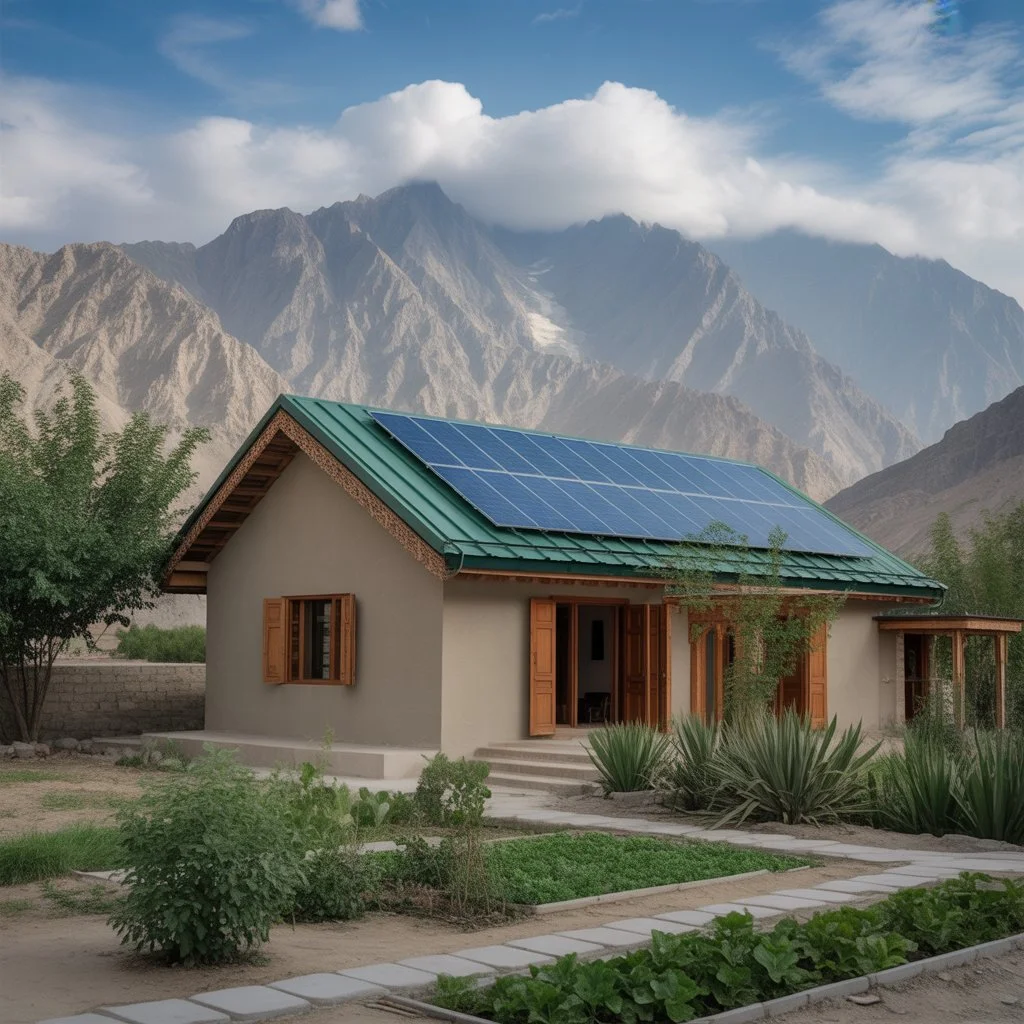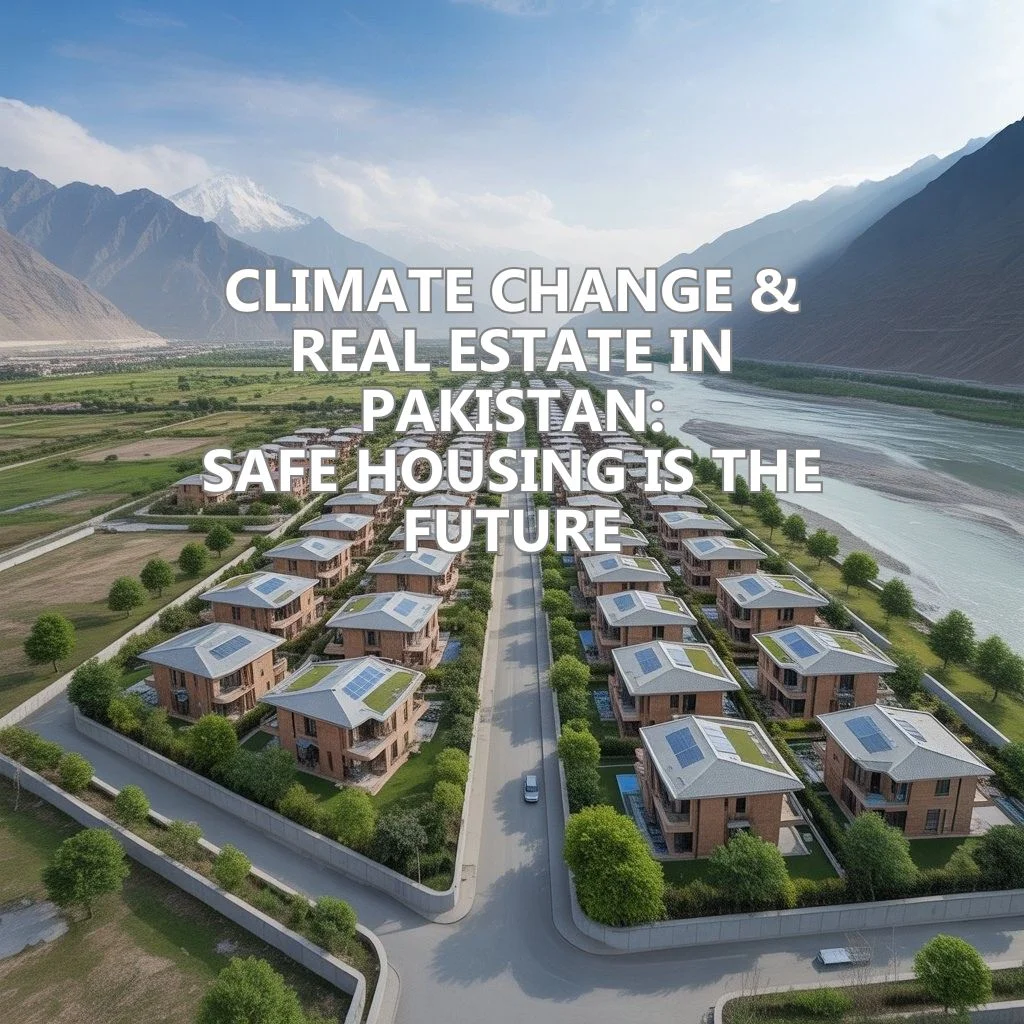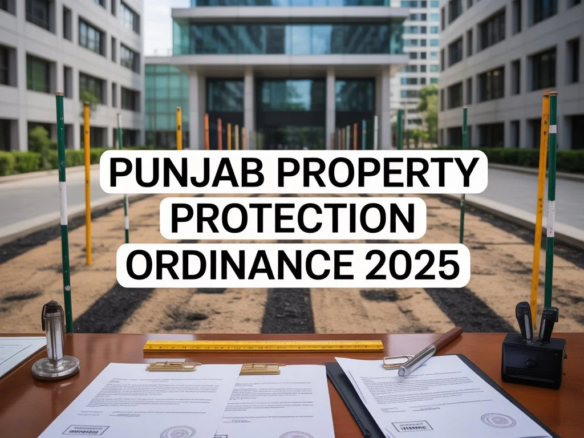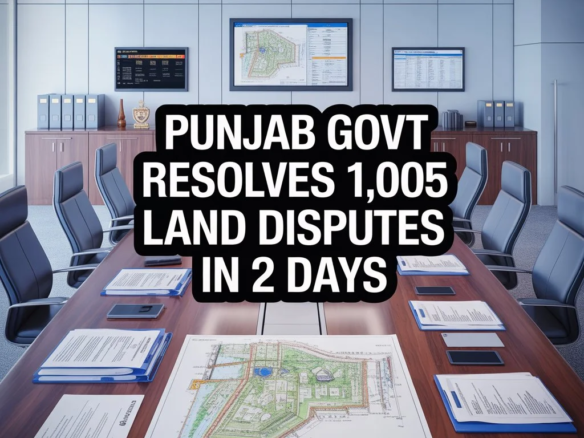Pakistan is on the frontline of climate change. From devastating floods in Punjab to landslides in Gilgit-Baltistan, the country is witnessing the undeniable impact of extreme weather events. Real estate, one of Pakistan’s fastest-growing sectors, is now facing a new challenge: how to provide safe housing that can withstand the harsh realities of climate change. For homeowners and investors, the question is no longer about luxury or location it’s about safety, resilience, and long-term value.
Why Climate-Resilient Housing is No Longer Optional
The floods of recent years have made one truth painfully clear: traditional housing models are not built for the future. Rising water levels, urban flooding, and heatwaves have damaged thousands of homes, displacing families and destabilizing property values.
Safe housing in Pakistan has now become more than a preference it’s a necessity. With frequent climate disasters, buyers and investors are rethinking their priorities. Today, climate change in Pakistan real estate is reshaping demand: people want homes that guarantee safety during environmental crises.
Climate Change and Real Estate Investment Shifts
Real estate trends in Pakistan show a shift toward sustainable housing solutions. Investors are no longer only focusing on prime locations but are instead asking critical questions:
- Does this housing society have flood-prevention measures?
- Are there proper drainage and water channels?
- Is the construction designed to resist extreme heat and rainfall?
These questions are now driving property decisions. In 2025, flood-resistant housing in Pakistan and climate-resilient societies are seen as safer, more profitable investments.
Construction Practices for Climate-Safe Housing in Pakistan

Design and construction play a critical role in building homes that can survive climate stress. Pakistan’s housing developers are beginning to adopt climate-resilient construction practices, but much more needs to be done.
Key strategies include:
- Elevated Foundations – Raising houses above ground level reduces the risk of floodwater entering living spaces.
- Smart Drainage Systems – Housing societies must integrate wide water channels and underground drainage to handle heavy rainfall.
- Heat-Resistant Materials – Using reflective roofing, insulated walls, and natural ventilation can protect residents from rising temperatures.
- Green Architecture – Solar panels, rainwater harvesting, and rooftop gardens not only lower costs but also improve sustainability.
- Stronger Building Codes – Nationwide enforcement of safety regulations can help standardize climate-resilient housing designs.
These practices aren’t just about safety they also enhance the long-term investment value of properties, making them attractive to buyers who prioritize durability and security.
From Gilgit to Lahore: Why Every Region Needs Climate-Safe Housing
Pakistan’s climate crisis is not limited to one region. From the mountains of Gilgit-Baltistan to the urban centers of Lahore and Karachi, every part of the country faces unique threats:
- Northern Pakistan (Gilgit, Naran, Babusar): Flash floods, glacial lake outbursts, and landslides have destroyed homes, roads, and even tourist properties. Real estate here needs stronger foundations and slope-protection measures.
- Punjab (Lahore, Multan): Urban flooding continues to damage housing societies, lowering property values and creating safety concerns for residents.
- Sindh (Karachi, Hyderabad): Heavy rainfall overwhelms outdated drainage systems, making safe housing projects with modern infrastructure highly sought after.
- Khyber Pakhtunkhwa: Landslides and river overflows threaten rural and suburban housing, requiring reinforced structures and better urban planning.
This nationwide impact proves one thing: climate-resilient housing is no longer an option but a survival strategy for Pakistan’s real estate market.
How Investors Should Choose Safe Societies in 2025
For investors, 2025 presents both risks and opportunities. Choosing the right housing society requires a new approach:
- Location Matters, But Safety Comes First – Avoid flood-prone areas and prioritize projects with strong climate adaptation plans.
- Look for Sustainable Infrastructure – Societies with water drainage systems, energy-efficient homes, and disaster-prevention designs are more future-proof.
- Check Developer Reputation – Established developers focusing on eco-friendly housing in Pakistan will offer safer long-term returns.
- Government Approvals & Safety Standards – Ensure that the society complies with environmental safety codes and has proper municipal backing.
By prioritizing safe housing in Pakistan, investors not only protect their financial assets but also contribute to a more sustainable future.
Conclusion: Safe Housing is the Future of Real Estate in Pakistan
Climate change has changed the rules of real estate investment in Pakistan. Whether in Gilgit, Lahore, or Karachi, the demand for climate-safe, flood-resistant housing is rising fast. For developers, it means adopting resilient construction methods. For investors, it means making smarter choices in 2025. The bottom line? Safe housing is no longer a luxury it is the future of real estate in Pakistan. Those who adapt early will not only protect their families but also secure stronger financial returns in an unpredictable climate.
Want to know more? Check out Life After the Floods in Pakistan: Are Housing Societies Still Safe for Living and Investment?
Like, share and comment: Facebook, Instagram, Youtube and TikTok





Join The Discussion